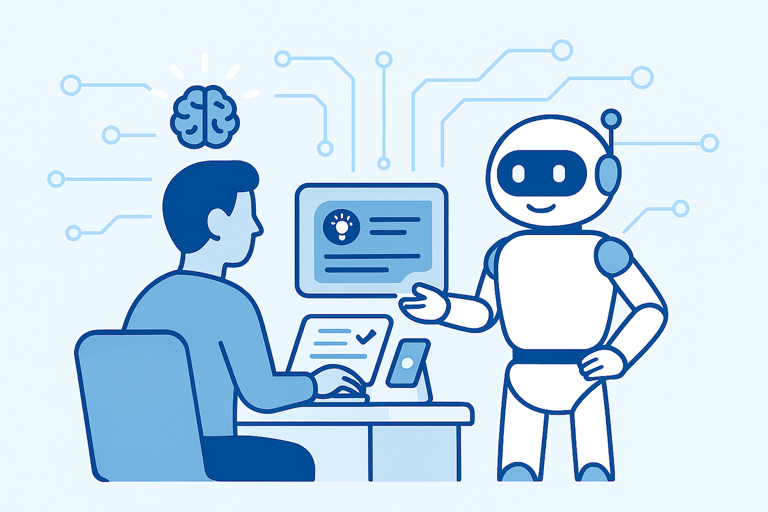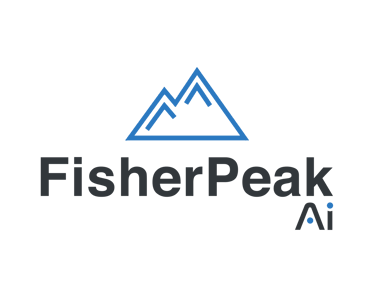Are You Outsourcing Your Thinking?
Explore the hidden cognitive costs of AI and how leaders can adopt responsible AI workplace implementation. Includes 5 practical strategies to stay sharp and competitive.scription.
AI SKILLS FOR THE FUTURE OF WORK
Grant DeCecco
7/7/20257 min read


Are You Outsourcing Your Mind? Navigating the AI Trap in Work and Life
Have you ever paused to consider whether the AI tools designed to help you work faster and smarter might actually be making you slower and less effective as a thinker?
AI has become a recurring theme in both my work and personal life. As a long-time power user, I see enormous potential in how it boosts productivity and creativity. My partner, a counsellor, uses AI cautiously for basic tasks, careful not to over-rely. Meanwhile, a close friend—who works in medical research—avoids it altogether, seeing it as a creativity killer.
Different views, same concern: if we’re not mindful, AI may stop being a tool and start doing the thinking for us.
In this post, I want to explore the impact AI is having on our ability to think critically and solve problems, both at work and in our everyday lives. Drawing from recent research, my own experiences, I’ll highlight the cognitive trade-offs we need to be aware of. And more importantly, I’ll offer five practical strategies you can use to ensure AI works for you, not the other way around.
The Efficiency Illusion
Let’s start with the good news: AI really does help us get more done. Whether it's summarizing reports, automating documentation, or drafting proposals, the speed and quality gains can be significant. A recent MIT study found that professional writers completed tasks 37% faster when using AI, and often produced better results. I’ve seen this firsthand in my own practice. AI allows me to move through early-stage ideation, research synthesis, and document prep with a lot more velocity, and less stress.
But this efficiency comes with a catch.
When we start leaning on AI to do our thinking, rather than simply support it, we risk dulling the very cognitive skills that make us effective in the first place. There’s a subtle shift that happens: instead of engaging with a problem ourselves, we prompt an AI tool and accept what it gives back. Over time, that shift becomes a habit. And then, a default.
It’s worth asking: are we getting smarter with AI? Or just faster?
The Cognitive Cost of Convenience
If this sounds alarmist, let me point to some hard evidence. In a 2023 study from Microsoft, researchers found that as AI confidence increased, critical thinking decreased. People weren’t just offloading tasks, they were outsourcing their judgment.
Even more telling, brain scans in an MIT experiment revealed lower cognitive engagement in participants using AI assistance compared to those solving problems on their own. In short, their brains weren’t doing the work. They were just validating or copy-pasting.
This isn’t just about productivity, it’s about how our minds are shaped. Cognitive skills are like muscles: they strengthen with use and atrophy with disuse. If we stop using our internal frameworks for solving problems, we eventually lose them. And that’s not something you can regenerate overnight. "Use it or Lose it."
London Taxi Drivers and the Power of Mental Maps
One of the clearest examples of this comes from the case of London taxi drivers. Unlike most cities, London requires its drivers to complete a rigorous multi-year training called The Knowledge, where they memorize the layout of 26,000 streets within a six-mile radius of Charing Cross. The process literally reshapes their brains, MRI scans show significant growth in the hippocampus, the region responsible for navigation and memory.
Then came GPS.
Some drivers adopted the tech and stopped relying on their internal maps. Others kept navigating the old-fashioned way. Over time, researchers found measurable cognitive decline in the group that switched to GPS. The drivers who retained The Knowledge maintained stronger memory, spatial reasoning, and problem-solving skills.
It's a perfect analogy for what's happening now with AI. We’re at a fork in the road: do we keep building our internal maps, or do we turn on autopilot?
Why Struggle Still Matters
One of the voices that has resonated with me on this topic is Simon Sinek. In a recent conversation, he made a compelling observation: we keep saying “life is about the journey,” yet when it comes to AI, we focus entirely on the output.
Think about it, when AI writes your email, crafts your marketing pitch, or drafts your business plan, you skip the part where you struggle to articulate the ideas. You skip the missteps, the reshaping, the a-ha moments that make you sharper next time.
But it’s that struggle, the imperfection, the iterative messiness that builds skill, insight, and resilience.
As someone who’s managed complex projects for two decades, I can say with confidence: my biggest professional growth came not from perfect execution, but from handling things when they went sideways. Those were the moments that forced me to think harder, communicate more clearly, and develop judgment. And no AI tool can replicate that learning curve for you.
The AI Trap: Becoming Human Interfaces
This is where the real danger lies. If we aren’t intentional, we may slowly morph into what some researchers call human interfaces for AI. We’ll prompt, receive, click, and repeat, while our ability to reason, challenge, and create quietly fades into the background.
It’s already happening in knowledge work. Many professionals now spend more time reviewing AI-generated content than creating it themselves. That may feel like progress in the short term, but in the long term, it could leave us intellectually hollow and emotionally detached from our work.
The solution isn’t to abandon AI. It’s to redefine our relationship with it.
How to Stay in Control
So how do we make sure AI remains a tool, not a replacement for our thinking? Here are five practical strategies I’ve found useful—and that I believe can help professionals at all levels stay sharp, thoughtful, and in control:
1. Designate AI-Free Zones
The first AI-Free zone should be your thinking. Create time or space in your day where you solve problems without any digital assistance. Whether it’s brainstorming, writing, or decision-making, go analog for an hour. This keeps your mental muscles active and your instincts sharp.
2. Practice First, AI Second
Before you turn to AI, try to solve the problem yourself. Sketch the outline. Draft the email. Structure the proposal. Then use AI to compare or enhance, not to replace your thinking.
3. Regular Cognitive Workouts
In order to improve your thinking and expand your knowledge, Challenge yourself with tasks that stretch your brain: writing by hand, doing calculations, debating ideas, or learning something new without digital shortcuts. Think of it as going to the mental gym.
4. Critical Curiosity
Another way to improve your brain is to treat AI like a very smart intern: useful, but fallible. Always ask yourself, “Does this make sense?” “What’s missing?” or “How would I explain this in my own words?” The moment you stop questioning, you stop thinking.
5. Embrace Imperfection
Last but not least,** allow room for struggle**. Resist the urge to smooth everything over with AI polish. That bumpiness you feel when doing hard work, that’s where learning happens.
Responsible AI Integration in the Workplace
For those of us in positions of responsibility, especially Product Managers, Project Managers, and HR leaders, how we guide our teams in AI use will directly shape the quality, originality, and resilience of our workplace environments. This is the foundation of responsible AI workplace implementation.
AI’s influence on our thinking isn’t just a personal or technical issue, it’s a leadership one. For those of us in positions of responsibility, especially Product and Project Managers and HR, how we use AI (and how we guide our teams in using it) will directly shape the quality, originality, and resilience of our work environments.
Here are five reasons this topic should be top-of-mind for workplace leaders:
1. Ethical and Responsible Leadership
Leaders have a duty to understand both the promise and the pitfalls of AI. It’s not just about adoption, it’s about creating boundaries and principles that guide its use responsibly. Doing so not only helps maintain a skilled, cognitively engaged workforce, it ensures your company remains agile, innovative, and competitive in a rapidly evolving market.
2. Creating AI-Resilient Teams
The best workplaces will be those where teams still think deeply, collaborate meaningfully, and engage with their work. Leaders must design cultures where AI assists, but never replaces, core human skills.
3. Maintaining Authentic Communication and Trust
If internal or external stakeholders start to sense that AI is doing the talking, credibility can suffer. Thoughtful communication, crafted by humans, will always carry more weight. For example, a tech company recently replaced most of its customer communication with AI-generated responses. Despite fast turnaround times, customer satisfaction scores dropped significantly as users reported feeling disconnected from the brand. It served as a reminder that even operational efficiency can't replace the trust and authenticity built through human interaction.
4. Building Future Talent
Growth, confidence, and resilience come from wrestling with hard problems. AI shortcuts can rob future leaders of those crucial developmental moments. As mentors, we need to prioritize learning over perfection.
5. Protecting and Promoting Creativity
Over-reliance on AI can lead to homogenized thinking or, worse, unintentional copyright issues. Leaders should actively foster original problem-solving and creative experimentation, especially in product development where differentiation matters.
In short, AI use should not only reflect operational goals, but human ones. As leaders, we’re responsible for setting that tone.
Where to Start: AI Governance
To lead well in this moment, we need more than curiosity, we need structure. This is where AI governance for managers becomes critical. Setting clear expectations, boundaries, and use cases will ensure your team doesn’t just adopt AI, but adopts it wisely.
I can help. Start with my AI Readiness Assessment (ARA) this week. Your future team depends on the boundaries you set today.
Final Thoughts: Use It, Don’t Lose It
AI is here to stay. And like every wave of technology before it, it brings both promise and peril. What’s different this time is the scope. This isn’t just about replacing manual effort, it’s about replacing thinking itself.
But that outcome isn’t inevitable. We still have a choice in how we engage with these tools. We can use AI to enhance our creativity, sharpen our ideas, and accelerate our work. Or we can let it quietly erode the very skills that make us human.
To bring this home, let me share how this very article came to be.
The inspiration came from real conversations—between me, my partner, and a good friend. Those discussions sparked my curiosity and led me to do my own research: reading articles, watching videos, and reflecting on my professional experience. I came up with the themes I wanted to explore, then used AI to help summarize the research into those themes and draft a first version. I edited the draft line by line, shaping it in my voice. Finally, I used AI again—for spelling, grammar, and consistency checks.
Is this version of the article something my AI-skeptical friend would call truly original? Maybe not. But it's also far from a total handover of creative agency. It’s a product of my thinking—amplified, not replaced.
That’s the balance I’m trying to strike. I hope you’ll find your version of it too.
This post reflects my personal experience and professional perspective. It’s intended to spark awareness and discussion, not serve as legal, clinical, or technological advice.
Credit to these creators for inspiring this post: Soleyman Shahir for The AI Trap, Explained, The Diary of a CEO for You're Being Lied To About AI's Real Purpose! We're Teaching Our Kids To Not Be Human!, and The Gray Area podcast episode "If AI can do your classwork, why go to college"
